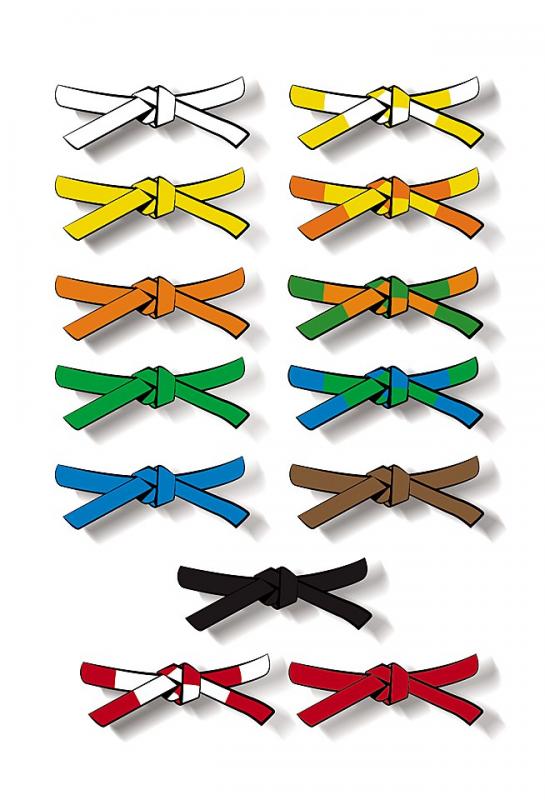Judo in color!


Ranking represents experience and level of understanding of judo. Belt color does not mean that one judoka is superior to another, even if they are higher in rank, only that they are more advanced in their study of judo.
The color system, from white to brown, appeared in Europe in the 1920s to help motivate European judoka and to provide a much clearer visual indication of progression. Since the 1980s, the belt system has continued to develop with half-color belts for children.
To advance from one rank to the next, there is an exam that follows a fixed framework of knowledge to be acquired and able to apply. The white, yellow, orange, green, blue, and brown belts are awarded at the dojo by a sensei from your club. Each belt color has its own challenges, and to be eligible for the grading exam, you must complete a certain number of hours of class time. Consistency in your practice is very important!
For the black belt, an exam is administered before the Judo Canada Grading Committee.
From white to brown belt, the ranks are called kyu, with the white belt being the 6th kyu and the brown belt the 1st kyu. All judoka must therefore make a significant progression before the famous black belt! A judoka who receives their black belt is no longer in the kyu but becomes a first Dan; it’s a new beginning for them!
Did you think the black belt was the ultimate goal? Surprise! It’s the first level of ten Dan. It’s the perfect example that in judo, you’ll always have something new to experience and learn. Some judokas continue to practice judo without moving up a Dan and that’s fine, others decide to work on the prerequisites to continue their progression. That’s the beauty of judo, your progression is yours. It will always represent your efforts and your decisions, nothing is acquired in judo!

